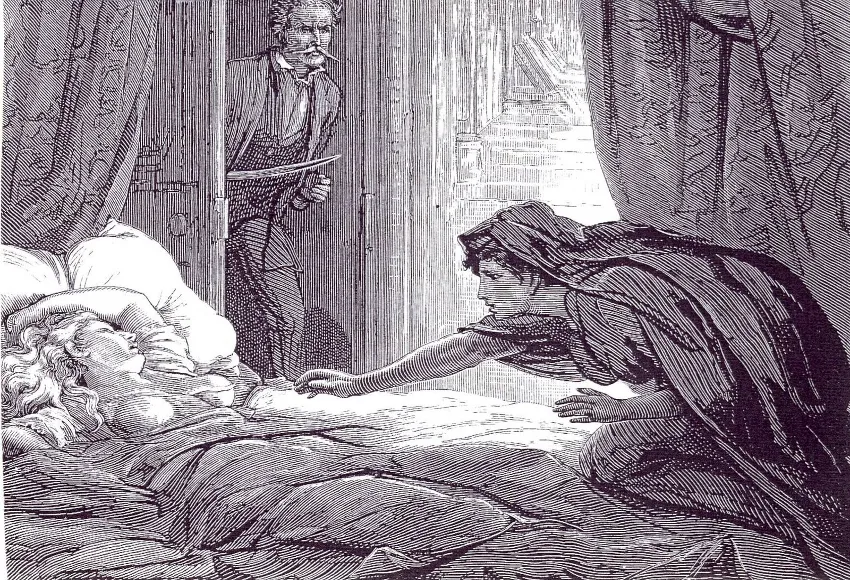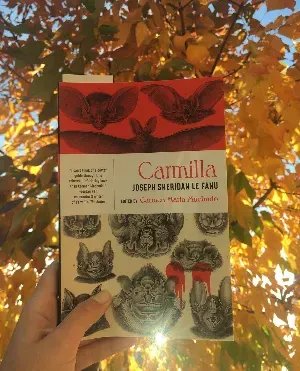As a child, I was always afraid of monsters. The mere notion of the paranormal would send shivers down my spine and leave me stiff. I feared ghosts, zombies, and werewolves, but worst of all, I feared vampires. A hemophiliac, I grew up in the wake of the Twilight boom. Babysitters and older cousins formed obsessions around sexy vampires, obsessions I never understood. I feared the sight of blood, especially my own. Just picturing a vampire sitting over my bed was enough to scare me into a paralyzed state of sleep for hours.
So when the suggestion to read Carmilla, the original vampire novel, came to the SGN's book club, I took it as a challenge, a fun way to revisit childhood fears and reassure my adult self that monsters are not real. I picked up my copy, edited by Carmen Maria Machado, from Elliott Bay Book Co. and immediately began reading.
After two pages, I made a chilling discovery: Carmilla may not have been entirely fiction. What started as a fun vampire novel full of dark fantasy soon gave way to the reality that perhaps monsters do exist after all.
With monsters just as tangible as when I was six, I began to wonder what we fear most about them. The answer seems obvious: vampires are so terrifying because they manipulate others with their charm, only to drain the blood out of their victims, leaving them to suffer the same miserable fate of immortality. It is the fear of the other: the fear that getting too close to them may also otherize us, and take away what makes us human.
We fear vampires because they will turn us into monsters – but what makes us so sure we weren't born monsters? We believe that the only way to become a vampire is to through a bite, but what if that isn't true? What if some of us have always been vampires just trying to repress our monstrosity?

Carmilla and monsters, then and today
In the foreword, Machado reveals that Joseph Sheridan Le Fanu stole content from correspondence between an unnamed doctor and a woman who only marked her name as "V." Historians believe "V" was Veronika Hausle, a well-off Englishwoman and suffragette. The titular Carmilla's real-life identity was that of Marcia Marén, a Spanish-Cuban aristocrat. Hausle's letters were said to be in the estate of author Le Fanu, who depicted the love V shared with Marén not as something sinister but as something beautiful, thus creating a story of self-discovery guided by an unlikely lover.
Despite his possible plagiarism, Le Fanu includes much of the women's love and romance in his final manuscript, giving readers a glimpse of intimate moments of affection between them. However, most of the novel derives its Gothic style from the idea that Laura's suffering is due to her inability to resist a perverse and unholy temptation. Simply, Carmilla is a fairytale, warning readers not to give in to desires.
While the novel leads readers to see Carmilla as a monster and root for her brutal demise to save the innocent Laura, the historical context yields a different, clear, and heartbreaking story. Marén was not a monster but rather a victim. Sodomy in England was punishable by death until 1861, and according to Machado, this was Marén's fate. The mob of men with pitchforks and torches hunting down a "vampire" justified their real-life counterparts, bigots hunting down a woman who refused to comply with heterosexuality. The ending scenes of the novel drive home the message: the real monsters that exist – and continue to exist today – may not be vampires but rather those possessed by intolerance.
Carmilla was one of the first novels to open the doors to the Lesbian pulp fiction genre. Gaining popularity after WWII, these cheaply made novels were the first to depict women in same-sex relationships. However, due to government censorship, publishers had to make sure all characters "became heterosexual" by the end of the novel, went insane, or had a tragic death. These Lesbian pulp novels, like Carmilla, villainized homosexuality. They depicted Lesbians – but only with the message that such behavior would lead to moral decay and tragedy.
These works solidified the fear of monsters. Humans had learned to fear monsters; then they learned to fear themselves, hiding who they were in an attempt to live a human life and escape the mob.
We've come a long way from the days when an angry mob would chase down and murder a Lesbian with a stake, but the monster hunters from Carmilla do still exist, and modern adaptations only show how relevant they still are.
In 2009, comedian James Corden starred in a loose film adaptation, Lesbian Vampire Killers, directed by Philip Claydon. The movie manages to simultaneously fetishize and demonize Lesbians, with Carmilla as the main antagonist. The vampire kills men and seduces women before turning them into members of her undead Lesbian army.
The film unintentionally manages to make the same point as the novel: that queerness is synonymous with monstrosity and that Queer folks, like vampires, will turn others into monsters if they get the chance.
The 21st-century adaptation of Carmilla also shows that patriarchal "monster hunters" remain just as powerful in institutions today. A reimagined feature film could have given her and Laura a happy ending or depicted queerness as natural. But in this world dominated by men, Lesbians remain as mysterious, scary, and misunderstood as vampires.
The possible true subtext behind Carmilla gives the story a much deeper message and leaves the reader with an understanding that monsters have always existed. However, the question we must ask next is: if queerness and monstrosity are inherently linked, who conditioned us to fear monsters? Who are the monsters?


